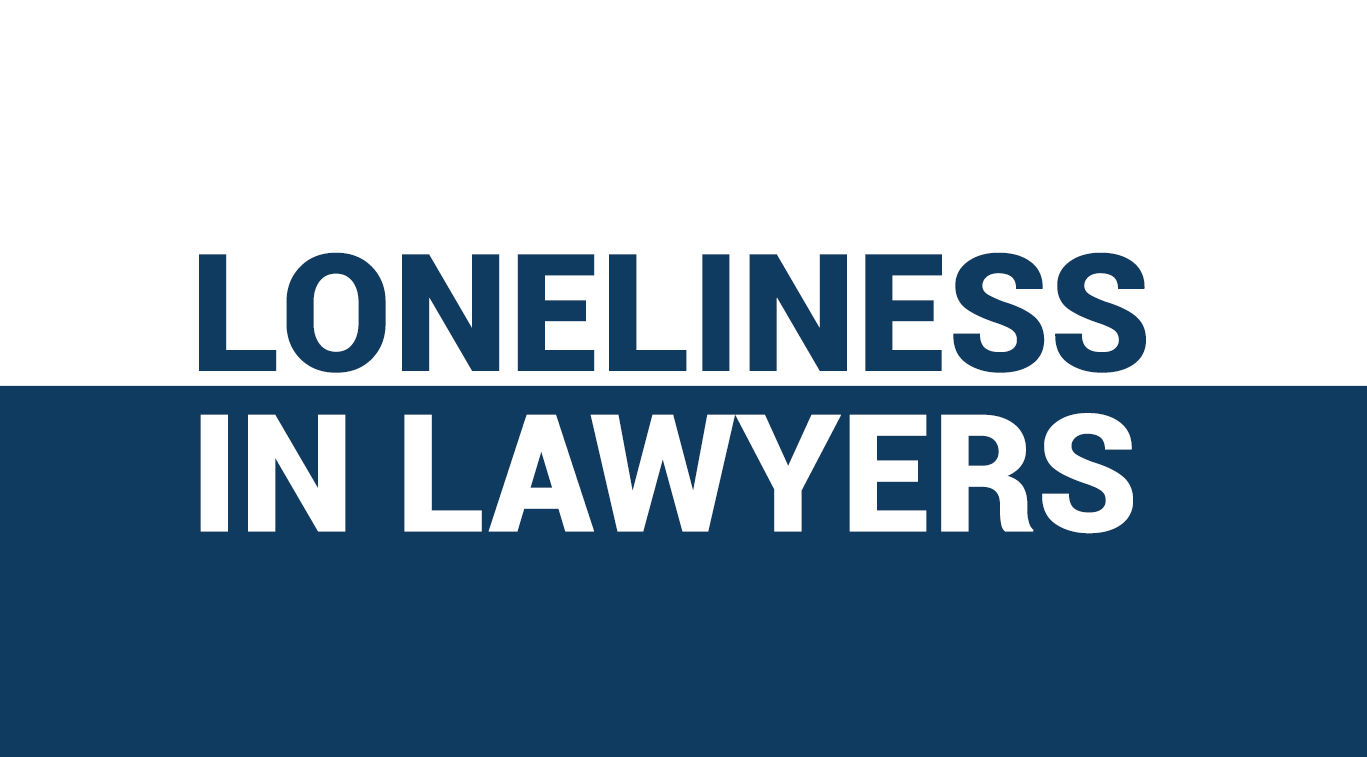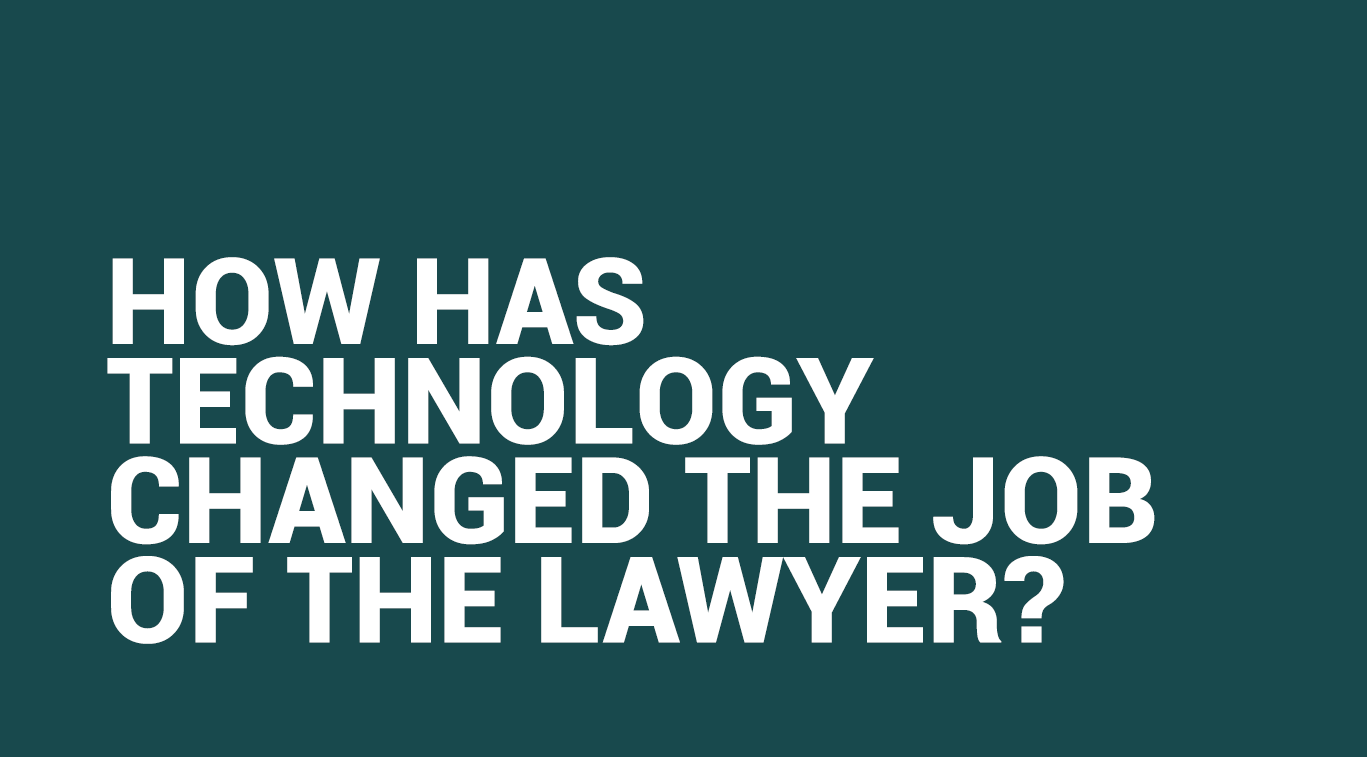Loneliness in Lawyers

Written by Shrisha Sapkota
Blogger

Introduction
The painful feeling that is experienced when the quantity or quality of one’s social relationships is perceived as deficient is called loneliness. Simply, loneliness is the state of distress or discomfort that results when one perceives a gap between one’s desires for social connection and actual experiences of it.
Loneliness is the feeling of being alone, regardless of the amount of social contact. Social isolation is a lack of social connections. Social isolation can lead to loneliness in some people, while others can feel lonely without being socially isolated. Even some people who are surrounded by others throughout the day or are in a long-lasting marriage, still experience deep and pervasive loneliness.
Two basic types of loneliness are social and emotional loneliness. Social loneliness originates from the absence of a broader group of contacts or an engaging social network. Emotional loneliness originates from the absence of an intimate figure or a close emotional attachment. Social and emotional loneliness often occur due to reduced social activities or loss of the partner, among other situations. Existential loneliness is another type of loneliness which includes not connecting with others and the world outside, alienation, feelings of isolation, emptiness, and abandonment.
According to a 2018 survey from The Economist and the Kaiser Family Foundation (KFF), more than two in ten adults in the United States (22%) and the United Kingdom (23%) say they always or often feel lonely, lack companionship, or feel left out or isolated. A recent Cigna survey revealed that nearly half of Americans always or sometimes feel alone (46%) or left out (47%). Fully 54% said they always or sometimes feel that no one knows them well. In Japan, there are more than half a million people under 40 who haven’t left their house or interacted with anyone for at least six months.
Figures like these have been ubiquitous in the press lately, with alarming statistics about loneliness now accompanied by equally alarming warnings that it’s stunting our lives and outright killing us. One study suggests that loneliness may actually be contagious. Research has found that non-lonely people who spend time with lonely people are more likely to develop feelings of loneliness. The scourge of loneliness is an issue that we’re going to hear ever-more about in the years to come.
Effects of loneliness:
Research suggests that loneliness poses serious threats to well-being as well as long-term physical health. According to the evolutionary theory of loneliness, the adaptive functions of loneliness that promote short-term survival can harm physical and mental health in the long term. Research has linked social isolation and loneliness to higher risks for a variety of physical and mental conditions: high blood pressure, heart disease, obesity, a weakened immune system, anxiety, depression, cognitive decline, Alzheimer’s disease, and even death.
Indeed, loneliness has been found to increase the risk of premature mortality and has been associated with severe mental health disorders for example.
Researchers at the Florida State University College of Medicine also found that loneliness is associated with a 40 percent increase in a person’s risk of dementia.
According to a meta-analysis co-authored by Julianne Holt-Lunstad, PhD, a professor of psychology and neuroscience at Brigham Young University, lack of social connection heightens health risks as much as smoking 15 cigarettes a day or having alcohol use disorder. She’s also found that loneliness and social isolation are twice as harmful to physical and mental health as obesity. A 2016 study led by Newcastle University linked loneliness to a 30% increase in risk of stroke or the development of coronary heart disease. According to the researcher, Nicole Valtorta, a lonely individual’s higher risk of ill health likely stems from several combined factors: behavioral, biological and psychological. “Lacking encouragement from family or friends, those who are lonely may slide into unhealthy habits,” Valtorta says. “In addition, loneliness has been found to raise levels of stress, impede sleep and, in turn, harm the body. Loneliness can also augment depression or anxiety.”
“Lacking encouragement from family or friends, those who are lonely may slide into unhealthy habits,” Valtorta says. “In addition, loneliness has been found to raise levels of stress, impede sleep and, in turn, harm the body. Loneliness can also augment depression or anxiety.”
In 2015, researchers at UCLA discovered that social isolation triggers cellular changes that result in chronic inflammation, predisposing the lonely to serious physical conditions like heart disease, stroke and metastatic cancer.
Moreover, one 2015 analysis, which pooled data from 70 studies following 3.4 million people over seven years, found that lonely individuals had a 26% higher risk of dying. This figure rose to 32% if they lived alone.
The negative consequences of loneliness emphasize the importance of social connectedness and the need for targeted interventions to combat loneliness.
Cause of loneliness
At the heart of loneliness is a lack of connection. As social animals, we have an innate desire to belong. We don’t always experience this consciously, but it resides deep within us. People often describe it as feeling ‘socially connected’ or being part of a ‘community’ where they feel secure. Real human connection allows us to relate to others, feel supported and validated by others, and share our struggles and victories with those who matter most to us. Without this authentic connection, we feel distance from others, a lack of trust and a growing sense that we are alone that we are not understood, that we must carry our burdens by ourselves.
Worldwide, up until the 1960s, single-person households were exceedingly rare. But over the past 50 years, the share of U.S. households consisting of one person has more than doubled. It’s now the second most common household type, well ahead of married couples with minor children. Living alone is most prevalent in large cities, where around 40% of households have single occupants. In some neighborhoods in Manhattan and Washington, D.C., the share is as high as two-thirds. The most recent U.S. census data, for example, show that more than a quarter of the population lives alone which is the highest rate ever recorded.
Loneliness per age groups
Despite a persistent stereotype associating loneliness with older adults research has revealed that loneliness is prevalent in all age groups and peaks in adolescence and early adulthood as well as in old age. In most societies, loneliness resembles a U-shaped curve: Subjective loneliness is high in adolescence and young adulthood, declines through middle age, and rises again in old age. According to the 2016 Viceland UK Census, loneliness is the number one fear of young people today, ranking ahead of losing a home or a job. Fully 42% of millennial women are more afraid of loneliness than a cancer diagnosis, by far the highest share of any generation. This fear has been ingrained into the very lexicon of millennials, immortalized in acronyms like “FOMO” and its many companion terms.
According to a Dutch research of more than 52,000 people, risk factors associated with higher levels of self-reported loneliness across the life span were being male, lower education levels, inadequacy of financial resources, mental health, informal caregiving that is experienced as burdensome, and limited social contact or network type. In addition, in early adulthood, having a non-western migration background and having a physical disability were associated with higher levels of loneliness, whereas living alone, having a non-western migration background, and not having a paid job were risk factors of loneliness in middle adulthood. In late adulthood, living alone and having a physical disability were associated with loneliness.
Loneliness in Lawyers
A study in a 2016 for a medical journal found high rates of depression, stress, anxiety and problematic substance use among attorneys. According to a survey of about 1,600 workers across the United States of America, published this month in the Harvard Business Review to better understand the risk by profession, 61 percent of the lawyers in her sample ranked “above average” on a loneliness scale from the University of California at Los Angeles.
Other particularly lonely groups were engineers (57 percent), followed by research scientists (55 percent), workers in food preparation and serving (51 percent), and those in education and library services (45 percent).
Even without vicarious trauma, legal work is heavy for a range of other reasons. You may be a solo practitioner feeling the pressure to do it all, a new lawyer who feels constantly unqualified, a government lawyer who feels like there is never an end to the work, or a big firm associate feeling pressure to over-perform so you can keep up with the other high-achieving associates.
Lawyers are generally seen by society as intellectual, confident, reliable, capable, and logical people. When they are feeling vulnerable or worried, it can be difficult to open up and talk because of these societal expectations. There may also be concerns about confidentiality and the effect of gossip on potential business. Stressful workplaces and interpersonal environments can further compound the problem.
Unlike mental health professionals, lawyers in general are not trained on how to practice self-care, even though clients often treat lawyers like therapists. A common issue among lawyers serving at-risk and traumatized populations is the tendency to hold onto the emotional material they hear.
How does loneliness affect law firms?
Loneliness not only impairs one’s mood and health, it can also hurt productivity and profits. According to researchers who study the issue, the economic damage caused when employees suffer feelings of isolation could soon worsen as offices become increasingly automated and more people work remotely. Loneliness, too, can exacerbate lawyer burnout, by decreasing one’s capacity for resilience. For most, it diminishes the quality of life and work.
Experiencing poor social connections and loneliness within the workplace can impair the executive function of lawyers. It reduces task performance and blights the powers of reasoning, efficiency, planning, emotional regulation, analysis, abstract thinking, and accurate decision-making of lawyers. It can affect productivity and results in increased sickness levels and reduced staff retention within workplaces. Within a legal context, it has been reported anecdotally that loneliness affects how we focus on tasks, communicate with clients, and make deadlines. It affects their mood, stress levels, self-esteem, sleep habits and relationships at work and home.
Friends and loved ones are essential to well-being. Despite all of the time we spend at work and the significant role our professions play in our identity, it is important to have relationships and activities outside of work. Spending time with family and friends not only provides much needed support, meaning, and respite from the work you do, but being engaged in activities and relationships that are completely different from your work can help your brain think differently and more creatively.
How can legal software help in forming relationships?
Adopting the right legal software tools might assist the lawyers in completing their tasks faster and easier which allows the lawyers to have more time to have fun and socialize. For example, the legal documentation management tools or the legal case management software allows automatic processing of cases and documents which makes the tasks of lawyers simpler. Furthermore, the legal client relationship management software assists in collecting, organising, interpreting and implementing customer data which makes the tasks of lawyers less hectic. This way, through the use of the software, the lawyers can have a better time at work and can also reduce their stress, which makes them more likely to stress less and have a nice time socializing.
References
[1] https://journals.sagepub.com/doi/full/10.1177/02654075211059193
[2] https://www.psychologytoday.com/us/basics/loneliness
[3] https://www.cdc.gov/aging/publications/features/lonely-older-adults.html
[4] https://www.cdc.gov/aging/publications/features/lonely-older-adults.html
[5] https://www.cdc.gov/aging/publications/features/lonely-older-adults.html
[6] https://www.psychologytoday.com/us/basics/loneliness
[7] https://academic.oup.com/gerontologist/article/61/7/e335/5865445
[8] https://academic.oup.com/gerontologist/article/61/7/e335/5865445
[9] https://academic.oup.com/gerontologist/article/61/7/e335/5865445
[10] https://academic.oup.com/gerontologist/article/61/7/e335/5865445
[11] https://academic.oup.com/gerontologist/article/61/7/e335/5865445
[12] https://www.forbes.com/sites/neilhowe/2019/05/03/millennials-and-the-loneliness-epidemic/
[13] https://www.forbes.com/sites/neilhowe/2019/05/03/millennials-and-the-loneliness-epidemic/
[14] https://www.forbes.com/sites/neilhowe/2019/05/03/millennials-and-the-loneliness-epidemic/
[15] https://www.forbes.com/sites/neilhowe/2019/05/03/millennials-and-the-loneliness-epidemic/
[16] https://www.forbes.com/sites/neilhowe/2019/05/03/millennials-and-the-loneliness-epidemic/
[17]https://www.verywellmind.com/loneliness-causes-effects-and-treatments-2795749#:~:text=Loneliness%20is%20a%20state%20of,Psychological%20Benefits%20of%20Being%20Alone
[18]https://www.verywellmind.com/loneliness-causes-effects-and-treatments-2795749#:~:text=Loneliness%20is%20a%20state%20of,Psychological%20Benefits%20of%20Being%20Alone
[19] https://www.forbes.com/sites/neilhowe/2019/05/03/millennials-and-the-loneliness-epidemic/
[20] https://www.psychologytoday.com/us/basics/loneliness
[21] https://journals.sagepub.com/doi/full/10.1177/02654075211059193
[22]https://www.nia.nih.gov/news/social-isolation-loneliness-older-people-pose-health-risks#:~:text=Health%20effects%20of%20social%20isolation,Alzheimer’s%20disease%2C%20and%20even%20death.
[23] https://journals.sagepub.com/doi/full/10.1177/02654075211059193
[24]https://www.apa.org/monitor/2019/05/ce-corner-isolation
[25] https://www.apa.org/monitor/2019/05/ce-corner-isolation
[26] https://www.apa.org/monitor/2019/05/ce-corner-isolation
[27] https://www.apa.org/monitor/2019/05/ce-corner-isolation
[28] https://www.apa.org/monitor/2019/05/ce-corner-isolation
[29]https://www.apa.org/monitor/2019/05/ce-corner-isolation
[30] https://www.apa.org/monitor/2019/05/ce-corner-isolation
[31] https://www.forbes.com/sites/neilhowe/2019/05/03/millennials-and-the-loneliness-epidemic/
[32] https://www.forbes.com/sites/neilhowe/2019/05/03/millennials-and-the-loneliness-epidemic/
[33] https://www.forbes.com/sites/neilhowe/2019/05/03/millennials-and-the-loneliness-epidemic/
[34] https://journals.sagepub.com/doi/full/10.1177/02654075211059193
[35]https://www.lclma.org/2019/06/20/lonely-lawyers-feeling-isolated-identifying-support/#:~:text=Lawyers%20are%20the%20loneliest%20of%20all%20professionals%2C%20according%20to%20a,many%20negative%20mental%20health%20outcomes.
[36]https://www.lawsociety.ie/gazette/in-depth/lonely-lawyers
[37] https://www.lawsociety.ie/gazette/in-depth/lonely-lawyers
[38] https://www.lawsociety.ie/gazette/in-depth/lonely-lawyers
[39]https://www.lclma.org/2019/06/20/lonely-lawyers-feeling-isolated-identifying-support/#:~:text=Lawyers%20are%20the%20loneliest%20of%20all%20professionals%2C%20according%20to%20a,many%20negative%20mental%20health%20outcomes.
[40]https://www.lclma.org/2019/06/20/lonely-lawyers-feeling-isolated-identifying-support/#:~:text=Lawyers%20are%20the%20loneliest%20of%20all%20professionals%2C%20according%20to%20a,many%20negative%20mental%20health%20outcomes.
[41] https://www.forbes.com/sites/neilhowe/2019/05/03/millennials-and-the-loneliness-epidemic/
[42] https://www.forbes.com/sites/neilhowe/2019/05/03/millennials-and-the-loneliness-epidemic/
[43] https://www.forbes.com/sites/neilhowe/2019/05/03/millennials-and-the-loneliness-epidemic/
[44] https://www.forbes.com/sites/neilhowe/2019/05/03/millennials-and-the-loneliness-epidemic/
[45] https://www.apa.org/monitor/2019/05/ce-corner-isolation
[46]https://journals.sagepub.com/doi/full/10.1177/02654075211059193
[47]https://www.forbes.com/sites/neilhowe/2019/05/03/millennials-and-the-loneliness-epidemic/
[48] https://www.forbes.com/sites/neilhowe/2019/05/03/millennials-and-the-loneliness-epidemic/
[49]https://www.forbes.com/sites/neilhowe/2019/05/03/millennials-and-the-loneliness-epidemic/
[50] https://www.forbes.com/sites/neilhowe/2019/05/03/millennials-and-the-loneliness-epidemic/
[51] https://journals.sagepub.com/doi/full/10.1177/02654075211059193
[52] https://journals.sagepub.com/doi/full/10.1177/02654075211059193
[53] https://journals.sagepub.com/doi/full/10.1177/02654075211059193
[54]https://journals.lww.com/journaladdictionmedicine/Fulltext/2016/02000/The_Prevalence_of_Substance_Use_and_Other_Mental.8.aspx
[55]https://www.lclma.org/2019/06/20/lonely-lawyers-feeling-isolated-identifying-support/#:~:text=Lawyers%20are%20the%20loneliest%20of%20all%20professionals%2C%20according%20to%20a,many%20negative%20mental%20health%20outcomes.
[56]https://www.lclma.org/2019/06/20/lonely-lawyers-feeling-isolated-identifying-support/#:~:text=Lawyers%20are%20the%20loneliest%20of%20all%20professionals%2C%20according%20to%20a,many%20negative%20mental%20health%20outcomes.
[57] https://www.lawsociety.ie/gazette/in-depth/lonely-lawyers
[58] https://www.lawsociety.ie/gazette/in-depth/lonely-lawyers
[59] https://www.lawsociety.ie/gazette/in-depth/lonely-lawyers
[60] https://www.lawsociety.ie/gazette/in-depth/lonely-lawyers
[61]https://www.lclma.org/2019/06/20/lonely-lawyers-feeling-isolated-identifying-support/#:~:text=Lawyers%20are%20the%20loneliest%20of%20all%20professionals%2C%20according%20to%20a,many%20negative%20mental%20health%20outcomes.
[62]https://www.lclma.org/2019/06/20/lonely-lawyers-feeling-isolated-identifying-support/#:~:text=Lawyers%20are%20the%20loneliest%20of%20all%20professionals%2C%20according%20to%20a,many%20negative%20mental%20health%20outcomes.
[63]https://www.washingtonpost.com/news/wonk/wp/2018/03/30/american-workers-are-already-lonely-here-come-the-robots/
[64]https://www.washingtonpost.com/news/wonk/wp/2018/03/30/american-workers-are-already-lonely-here-come-the-robots/
[65]https://www.psychologytoday.com/us/blog/being-unlonely/201912/workplace-burnout-and-loneliness-what-you-need-know#:~:text=When%20people%20feel%20overwhelmed%2C%20exhausted,decreasing%20one’s%20capacity%20for%20resilience.
[66] https://www.lawsociety.ie/gazette/in-depth/lonely-lawyers
[67] https://www.lawsociety.ie/gazette/in-depth/lonely-lawyers
[68] https://www.lawsociety.ie/gazette/in-depth/lonely-lawyers
[69] https://www.lawsociety.ie/gazette/in-depth/lonely-lawyers
[70] https://www.lawsociety.ie/gazette/in-depth/lonely-lawyers
[71]https://www.lclma.org/2019/06/20/lonely-lawyers-feeling-isolated-identifying-support/#:~:text=Lawyers%20are%20the%20loneliest%20of%20all%20professionals%2C%20according%20to%20a,many%20negative%20mental%20health%20outcomes.
[72]https://www.lclma.org/2019/06/20/lonely-lawyers-feeling-isolated-identifying-support/#:~:text=Lawyers%20are%20the%20loneliest%20of%20all%20professionals%2C%20according%20to%20a,many%20negative%20mental%20health%20outcomes.
[73]https://www.lclma.org/2019/06/20/lonely-lawyers-feeling-isolated-identifying-support/#:~:text=Lawyers%20are%20the%20loneliest%20of%20all%20professionals%2C%20according%20to%20a,many%20negative%20mental%20health%20outcomes.








